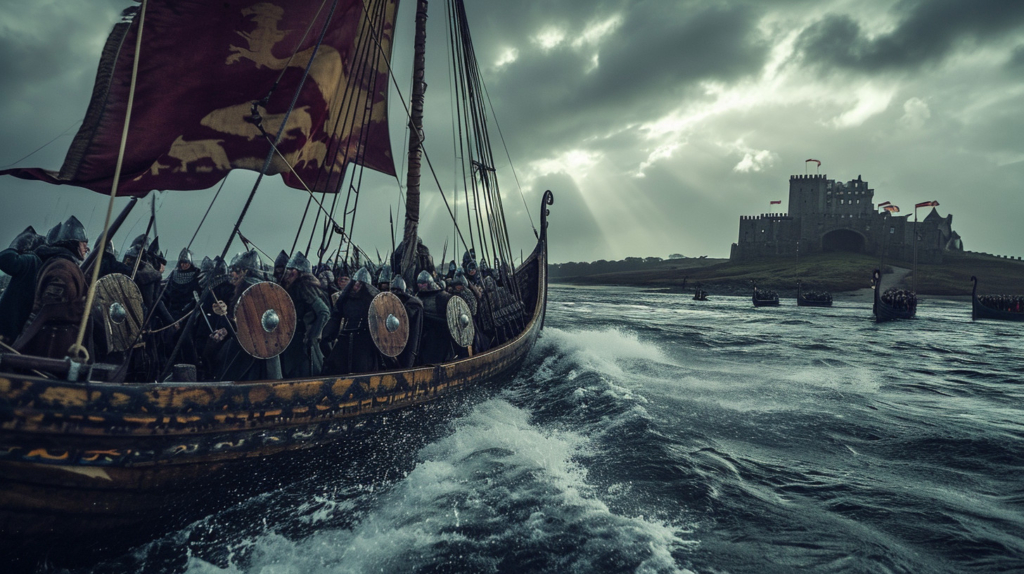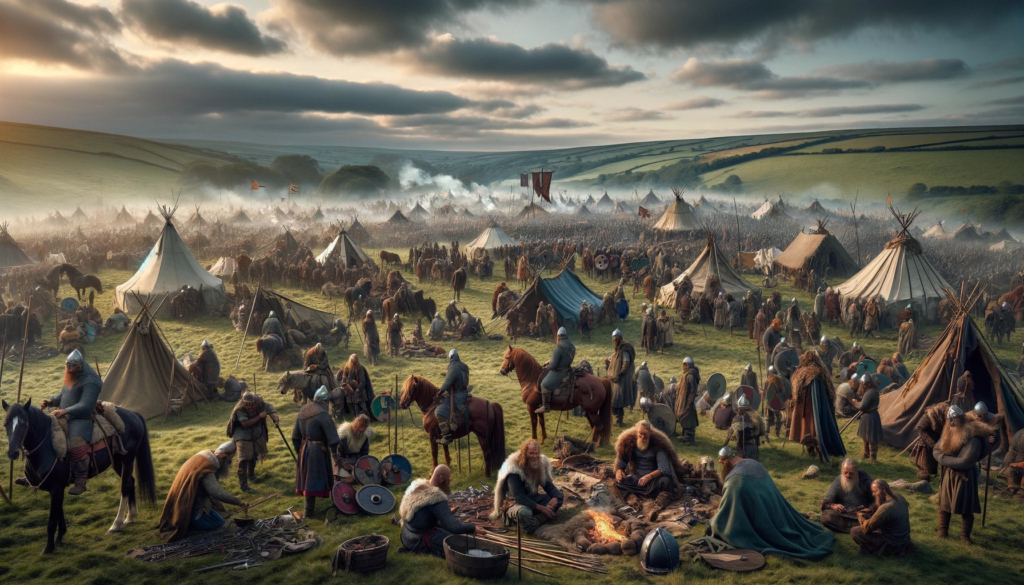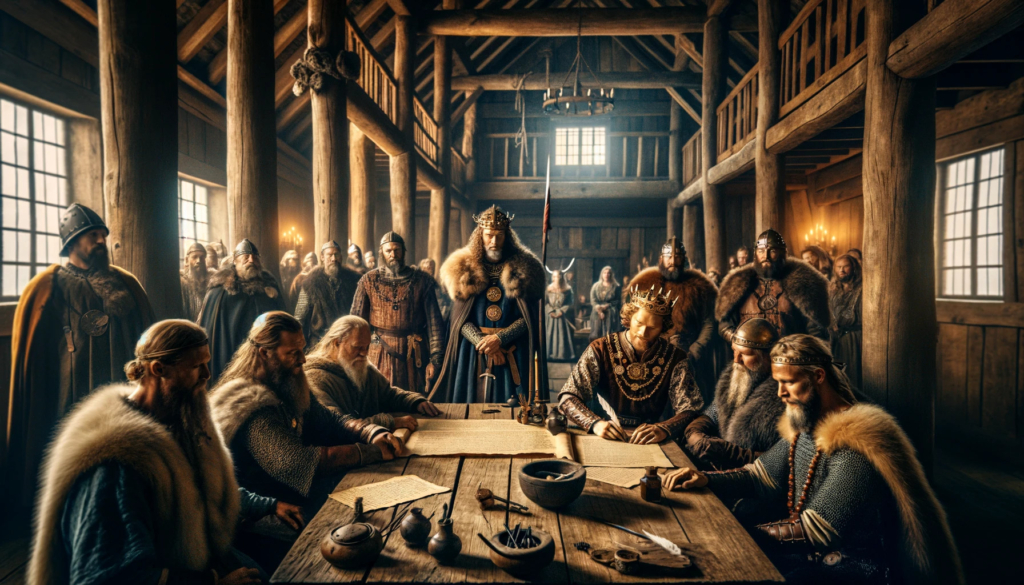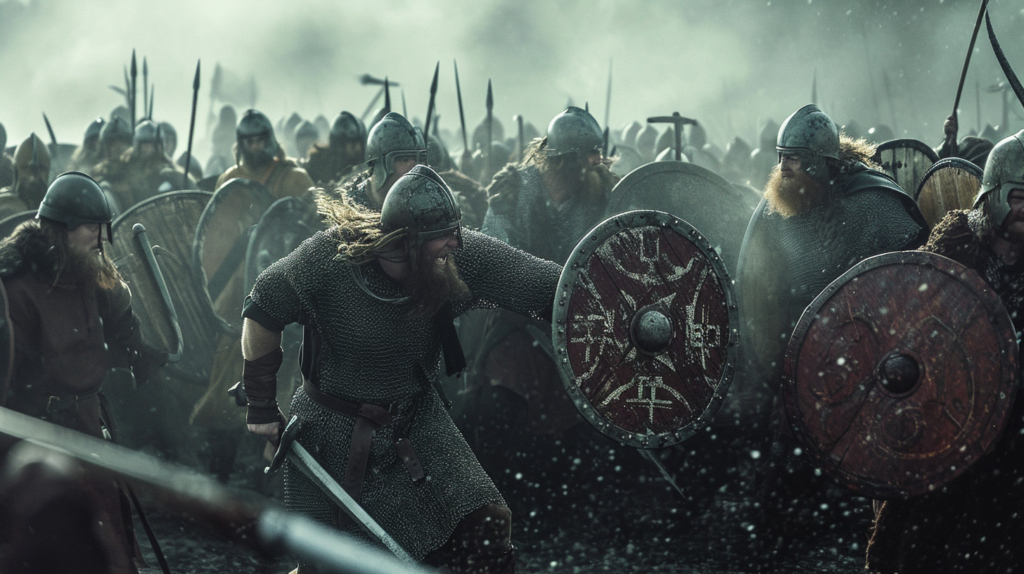Although I’ve been trying to make a point that the Viking Age people were not the bloody berserks they have been portrayed as – there is no denying that they DID do a lot of fighting.
Vikings are most famous for their raids, where they came in their longships, attacked an often unprotected target, raided it, and disappeared to sea again. And since many historians date the beginning of the Viking Age to 793 with the attack on the English monastery Lindisfarne, let’s start there.

Viking raiders from Scandinavia, likely Norway or Denmark, targeted Lindisfarne due to its wealth and the fact that it lacked military defence. The attack was brutal and swift; the Vikings warriors plundered the monastery’s treasures, killed and enslaved many monks, and caused significant destruction.
The Lindisfarne raid shocked the Christian world, as monasteries were considered sacred and safe places. The event was recorded in the Anglo-Saxon Chronicle and other contemporary texts, often with apocalyptic overtones, reflecting the deep fear and uncertainty it caused.
In the following decades, this was the preferred tactic of the Viking warriors, to “smash and grab” so to speak – their victims described their raids like a lightning bolt from a clear sky – they appeared, raided and disappeared again.
First in the second half of the 9th century, their raids transformed to expeditions of conquest and colonization. Instead of returning to Scandinavia when winter came, the Viking raiders decided to remain in England in fortified camps.
England was at this time not one country, but consisted of four independent kingdoms – Mercia, Wessex, East Anglia and Northumbria.

In 865 The Great Heathen Army landed in East Anglia. They were not there to raid, but to conquer land and settle. According to the Anglo-Saxon Chronicle, the army was led by Ivar the Boneless, Halfdan and Gorm, probably members of Danish royal houses (sometimes said to be sons of Ragnar Lothbrok, although he is not a verified historical person). The army is estimated to have consisted of between 2000-5000 warriors, mainly Danish and Norwegians.
In 866 the army of viking warriors attacked Northumbria and conquered York, by the Vikings called Jorvik, which became their stronghold in England. The following years, East Anglia, Northumbria and Mercia were defeated. Only Wessex and king Alfred (the Great) stood against them.

In 878 a peace treaty was concluded between the Vikings and king Alfred, where England was split between them. Alfred controlled London and everything west of the old roman road Watling Street, while the northeast became known as Danelaw – the land where the law of the Danes ruled.
Many Scandinavians settled in the occupied parts of England and lived there, farming the land and founding new cities. For a few decades there was relative peace on the island.
The Danelaw was not one united Viking kingdom, but rather many chiefdoms. The largest and most powerful was the kingdom of York (Jorvik), which cooperated with the Viking settlements in Ireland and would remain until 954.

The troubles began in 937 when king Athelstan of Wessex (grandson of Alfred the Great) won a great battle against the York-Vikings at Brunanburh. This counts as the greatest battle between Viking warriors and Englishmen.
After this, Athelstan slowly outmanoeuvred the rest of the chiefdoms and small kingdoms, until he united England under his rule.
When his successor, Edmund, died in 948 the Yorkist elite rebelled and offered the crown to Erik Bloodaxe, former Norwegian king. He was not able to hold on to power however, and in 954 he was defeated and the kingdom of York dissolved.
But the Viking presence in England was not yet over. More would come, with the conquest of Danish kings who would take the crown of all of England.
But first – Viking military structure and weapons. And the legendary shield maidens. More on that in the next few posts.
Sources:
Hall, Richard. Stora boken om Vikingarna. (2007)
Hjardar, Kim. Vikingarnas Värld. (2016)
Lihammer, Anna. Vikingatidens Härskare. (2021)

